119 videos match your search.
 |
William Turkel Mathematica's high-level commands and holistic approach make it possible for a single programmer to implement relatively complex research tools that are customized for a particular study. Here William Turkel shares ... |
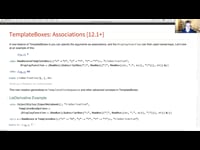 |
Jason Harris Jason Harris discusses the box representation in the Mathematica front end, leading into the discussion of TemplateBoxes and the representation of many typeset and evaluatable expressions in the front end. ... |
 |
Bruno Autin The study presented here develops general principles from the initial design decided upon at CERN for the LEP/LHC circle in the 1980s. These principles could be applied to other ... |
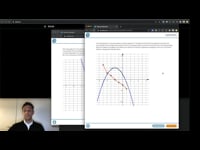 |
Chelsea Kharakozova, Maik Meusel MyLab provides customized learning experiences for millions of students. In this presentation, Chelsea Kharakozova and Maik Meusel show how interactive math exercises are created in the Wolfram Language and deployed ... |
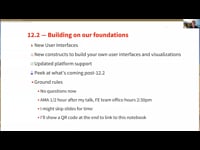 |
John Fultz John Fultz, Director of User Interface Technology for Wolfram Research, surveys the new functionality in the 12.2 notebook interface, along with some sneak peeks at the experimental technology being developed for ... |
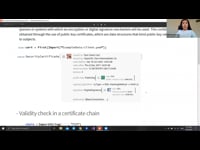 |
Dariia Porechna In the modern world, cryptography is omnipresent. In this talk, Dariia Porechna will introduce recent and future developments to Wolfram Language cryptography functionality in the areas of digital signing and ... |
 |
Yuzhu Lu In this presentation, Yuzhu Lu shows improvements and optimizations of existing Mathematica 2D and 3D Graphics language features, including texture and shading updates, 3D rotation gesture improvements, and performance enhancements of hit testing, rendering and printing. He also demonstrates some examples ... |
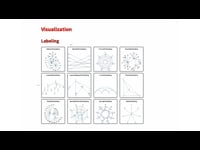 |
Jaebum Jung The Wolfram Language provides easy access to powerful graph functionalities. In this talk, Jaebum Jung gives you a chance to familiarize yourself with the features in Version 12 and get a ... |
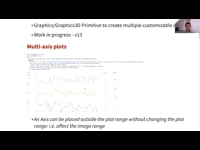 |
James Lane In this talk, James Lane introduces some of the new and experimental Graphics features in the 12.2.0 Mathematica front end. These include the new AxisBox primitive for creating customizable axes for ... |
 |
Jon Woodard This talk with cover an introduction to the Wolfram Eureka! Program and a Q&A with a founder, Philip Maymin. While Philip uses Wolfram technologies as a part of their ... |
 |
Lou D'Andria Beginning with the Suggestions Bar and the Image Editor, we have been adding contextual interfaces to the Wolfram Notebook for many years. Interfaces are built up from the usual Wolfram ... |
 |
Tomas de-Camino-Beck, Ph.D. In this presentation, Tomas de-Camino-Beck will explain the foundations of mathematical epidemiological models and where they come from, and will show successful examples dynamically, focusing on a COVID-19 data application ... |
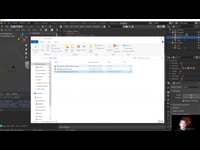 |
Paul Pawlenko, Charles Pooh The Wolfram Language provides easy access to powerful import/export functionality and a range of external connections. In this talk, Paul Pawlenko and Charles Pooh help familiarize you with some ... |
 |
Noah Hardwicke In this talk, Noah Hardwicke demonstrates the new drawing tools in Version 12.2. Principally for annotation, these tools attach to Graphics objects to provide controls for formatting and drawing primitives. He ... |
 |
Gustavo Restrepo, Ph.D, Javier Guevara In this talk, the start-up company Exergetika will show part of their solutions developed in Mathematica for engineering projects in oil and gas, energy efficiency analysis and chemical industries and ... |
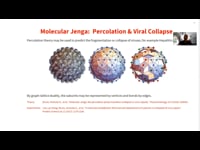 |
Nicholas Brunk, PSM, MS Graph-based percolation theory may be done in the Wolfram Language, to aid in the understanding of viruses, their disassembly and collapse. After forming predictions in the Wolfram Language, this analysis ... |
 |
John Odden |
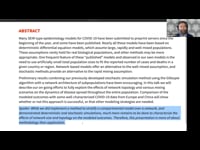 |
Robert Nachbar In this talk, Robert Nachbar will describe the ongoing efforts to fully explore the effects of network topology and various mixing scenarios on the dynamics of COVID-19 disease spread throughout the entire population. Comparison of ... |
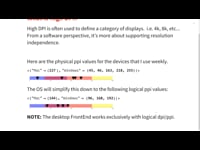 |
Ian Hojnicki This talk features Ian Hojnicki giving a brief overview of resolution independence and our support for it in Wolfram Language 12.1's user interface. Also discussed are some common issues that ... |
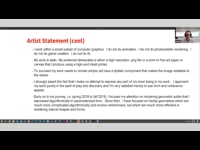 |
Robert Fine This presentation features Robert Fine discussing his use of Mathematica to create digital art in narrative form. He briefly outlines his experience with Mathematica as part of his finance career ... |